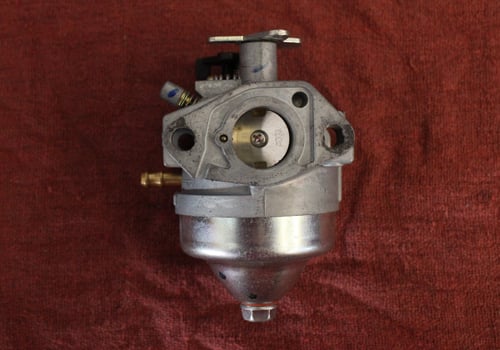How Small Engine Carburetors Work
What is a carburetor?
A carburetor is the device(?) inside an internal combustion engine that provides the area for air and gasoline to mix together
Components:
- Float pin
- Float bowl
- Venturi
- Choke valve
- Throttle valve
- Needle
- Main jet
- Idle jet

How a carburetor works:
- Air enters the carburetor through the engines air intake system
- How much air enters the carburetor depends on the setting of the choke, which covers the valve the more open the choke is, the more air can enter
- The air is pushed through an opening that narrows called the venturi.
- This creates a vacuum that pulls fuel in through the very small fuel jet, which lets just enough fuel in to create the right ratio for an explosion to power the engine
- Extra gas is held in the float bowl, when the bowl is full the float “floats” to the top and closes off the area that the fuel flows through,
- as the gas is released into the chamber, the float falls with the level of the gas and un-blocks the chamber opening, allowing the fuel bowl to fill back up
- When the throttle valve is open, gas is released more rapidly to make sure there is enough power to make the equipment go faster.
- When the throttle is closed and the engine is idling, there is a secondary valve called the idle valve on the outside of the throttle valve
Maintenance tips:
- Do not leave gas in your carburetor for longer than 30 days.
- Completely drain the gas tank and carburetor of fuel before storing your equipment, make sure you empty the carburetor bowl as well
- Check out Caburetor Problems and Solutions
- Find out how to tell if you need to rebuild or replace your carburetor here!
- See how to replace your carburetor
- See how to rebuild your carburetor
Featured Parts:







3 Responses to How Small Engine Carburetors Work